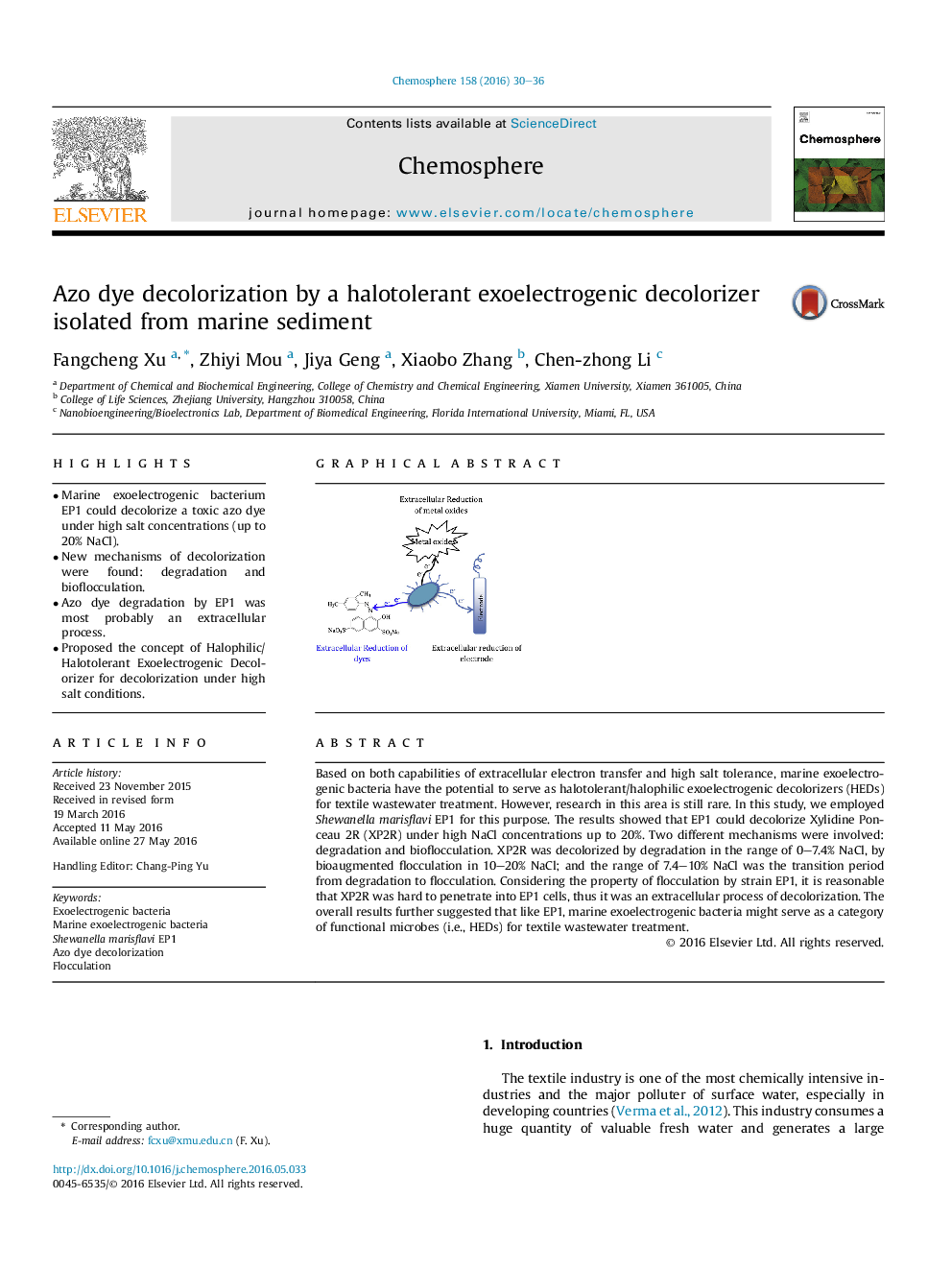| کد مقاله | کد نشریه | سال انتشار | مقاله انگلیسی | نسخه تمام متن |
|---|---|---|---|---|
| 4407586 | 1618813 | 2016 | 7 صفحه PDF | دانلود رایگان |
• Marine exoelectrogenic bacterium EP1 could decolorize a toxic azo dye under high salt concentrations (up to 20% NaCl).
• New mechanisms of decolorization were found: degradation and bioflocculation.
• Azo dye degradation by EP1 was most probably an extracellular process.
• Proposed the concept of Halophilic/Halotolerant Exoelectrogenic Decolorizer for decolorization under high salt conditions.
Based on both capabilities of extracellular electron transfer and high salt tolerance, marine exoelectrogenic bacteria have the potential to serve as halotolerant/halophilic exoelectrogenic decolorizers (HEDs) for textile wastewater treatment. However, research in this area is still rare. In this study, we employed Shewanella marisflavi EP1 for this purpose. The results showed that EP1 could decolorize Xylidine Ponceau 2R (XP2R) under high NaCl concentrations up to 20%. Two different mechanisms were involved: degradation and bioflocculation. XP2R was decolorized by degradation in the range of 0–7.4% NaCl, by bioaugmented flocculation in 10–20% NaCl; and the range of 7.4–10% NaCl was the transition period from degradation to flocculation. Considering the property of flocculation by strain EP1, it is reasonable that XP2R was hard to penetrate into EP1 cells, thus it was an extracellular process of decolorization. The overall results further suggested that like EP1, marine exoelectrogenic bacteria might serve as a category of functional microbes (i.e., HEDs) for textile wastewater treatment.
Figure optionsDownload as PowerPoint slide
Journal: Chemosphere - Volume 158, September 2016, Pages 30–36
